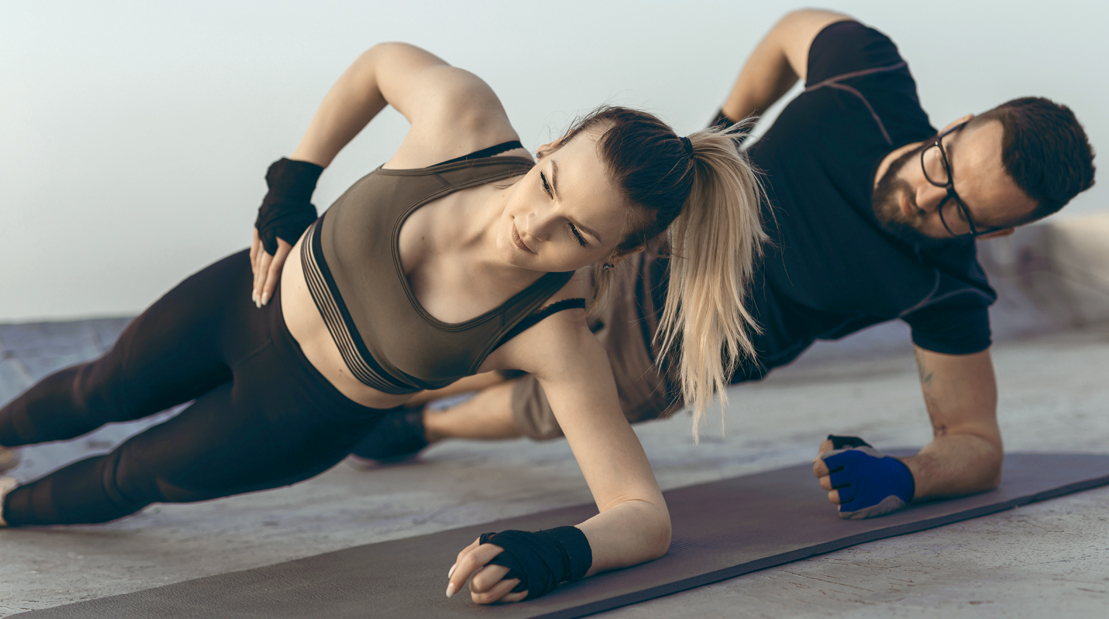28-Days-to-Lean Meal Plan
With the right plan and the right discipline, you can get seriously shredded in just 28 days.
Read article
In the world of fitness, you’ll often see training methods like high-intensity interval training, training until failure, or progressive overloading—which are all fantastic ways to exercise. However, low-impact training, a form of training that is often neglected (unless it’s used as a warm-up), needs the spotlight for a change.
While low-impact training doesn’t grace as many headlines as more intense forms of training, know that low-impact exercises have been utilized by professional athletes, bodybuilders, and those looking to minimize potential injuries, for decades.
From helping athletes recover from strenuous exercise (even more than rest days do, at times), to bettering the body by being gentler on it, low-impact training will keep you in shape, lessen your chance of injuries, and allow you to take it a little slower while still getting your sweat on.
So, whether you’re looking to scale back on all of your hard training, or are searching for a long-term fitness plan, here’s everything you need to know about training a little slower and gentler. (Don’t worry, you can build muscle and strength while incorporating low-impact exercise into your fitness routine).

“Low-impact workouts are exercises that minimize the stress and strain on your joints, making them suitable for people with joint issues, chronic pain, beginners, or those looking for a gentler form of exercise,” explains Holly Dixon, Owner of C3 Lifestyle, NASM-certified personal trainer, and Pelacore master instructor, who is going to lay down the groundwork for all things low-impact exercise.
How To Differentiate When to Scale Back in the Gym and When to Rest
There are a few different approaches to incorporating low-impact workouts into your gym routine. “For advanced fitness enthusiasts, low-impact workouts are a tool for recovery and monitoring how your body is feeling through your current fitness program,” says Dixon.
Dixon stresses that keeping low-impact workouts as a part of your routine helps balance the body and prevent injuries.
“Unless you are training for something specific, or a high-performing athlete, low-impact workouts should be a regular part of your programming,” she says.
Simply, the best way to differentiate how you should train, high versus low impact, according to Dixon, would be to start with what your personal goals are, age, health conditions, and your level of training. Using those factors, you should be able to develop your gym routine.
Hiring a qualified fitness professional might be a good way to get you started in that direction.
Are Low-Impact Workouts More Beneficial Than a Rest Day?
Rest days certainly have plenty of recovery benefits, but oftentimes, a light, low-impact training day can help the body as well. “Low-impact workouts can be more beneficial than a rest day because this form of exercise can help the body with recovery from more strenuous exercise and help improve everyday functioning,” says Dixon. So while rest is imperative for proper healing and muscle repair, adding some low-impact to your training to your program may work best in the long run.
“Reducing the stress on the joints can help someone manage chronic pain, arthritis, EDS, and other chronic illnesses (if the person is not in a flare), says Dixon.
And everyday or seasonal activities like walking and swimming can help enhance blood flow without the stress associated with high-impact workouts. “This improved blood flow helps heal tissues and muscles, says Dixon.
And despite the gentle approach, low-impact exercise is also for those looking to build muscle. “Low-impact workouts can help maintain or gradually build muscle strength,” says Dixon, and with that boost mood, and mental well-being.
Low-impact workouts are suitable for a wide range of people, including:

There are several types of low-impact training exercises that cater to a wide range of fitness goals and preferences. Cardiovascular low-impact exercises can be an effective way to elevate the heart rate and improve endurance while minimizing stress on the joints. Strength-focused low-impact target muscle groups to enhance tone, stability, and overall body strength, without the impact of high-impact exercises. Flexibility exercises help improve joint mobility, reduce stiffness, and promote relaxation. These three types of low-impact exercises offer a versatile approach to fitness that can be tailored to individual needs, making them accessible and suitable for individuals of all ages and fitness levels.

For the workouts, Dixon enjoys creating a circuit-style session designed to work out your body from head to toe but in a low-impact fashion. Here’s a peek.
Warmup: Be sure to do a warm up for about five to ten minutes performing moves that get your blood flowing. This looks like jumping jacks, walking briskly on the treadmill, or elliptical, and hip circles.
How to:
Dixon’s Low-Impact Exercise Tips:
Gentle Yoga can also be used as a stand-alone low-impact workout focusing on flexibility, balance, strength, and body awareness.
As with any form of exercise, Dixon encourages you to go at your own pace, listen to your body, and modify exercises as needed. “The goal is to engage in a well-rounded workout that promotes cardiovascular health, strength, balance, and flexibility while minimizing impact on your joints,” she says. Adding low-impact exercises into your current routine can leave you feeling more flexible, refreshed, and injury-free.